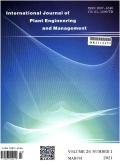Design and Feasibility Analysis of the Electricity Generation System Based on Residual Heat
International Journal of Plant Engineering and Management
Pub Date : 2018-07-22
DOI:10.1115/ICONE26-82558
引用次数: 0
Abstract
Passive residual heat removal system (PRHRS) is of great significance for reactor shutdown safety. The PRHRS of a small modular reactor, such as the integral pressurized water reactor (iPWR) and the modular high temperature gas-cooled reactor (MHTRG), is composed of the primary loop (PL), intermediate loop (IL) and air-cooling loop (AL). The AL is a density-difference-driven natural circulation caused by the difference of air temperature at the inlet and outlet of the air-cooling tower. Thus, it is possible to adopt the air flow in AL to generate electricity for post-shutdown reactor monitoring. In this paper, a novel residual heat electricity generation system (RHEGS), which is composed of the PRHRS and a vertical wind generator installed in the air-cooling tower, is proposed for the power supply of post-shutdown monitoring instruments. To verify the feasibility of practical implementation, the dynamical model of this newly designed RHEGS including the dynamics of PRHRS, windmill, rotor as well as doubly-fed induction generator (DFIG) are all given. Then, both steady-state and transient verification for the RHEGS of a nuclear heating reactor NHR200-II plant with a rated thermal power of 200 MWth is carried out, which shows that the output active power of RHEGS can be 20∼30kW which is about 1% the residual heat flux and can fully meet the power requirements of post-shutdown monitoring instruments.余热发电系统的设计与可行性分析
被动余热排出系统(PRHRS)对反应堆停堆安全具有重要意义。整体压水堆(iPWR)和模块化高温气冷堆(MHTRG)等小型模块化反应堆的PRHRS由主回路(PL)、中间回路(IL)和风冷回路(AL)组成。AL是一种密度差驱动的自然循环,由空气冷却塔进出口的空气温度差异引起。因此,可以利用AL中的气流发电,进行反应堆停堆后监测。本文提出了一种新型的余热发电系统(RHEGS),该系统由PRHRS和安装在空冷却塔内的垂直风力发电机组成,用于停机后监测仪器的供电。为了验证实际实现的可行性,给出了该系统的动力学模型,包括PRHRS、风车、转子和双馈感应发电机(DFIG)的动力学模型。然后,对额定热功率为200 MWth的NHR200-II型核加热堆机组的RHEGS进行了稳态和暂态验证,结果表明,RHEGS输出有功功率可达20 ~ 30kW,约为余热通量的1%,完全满足停后监测仪器的功率要求。
本文章由计算机程序翻译,如有差异,请以英文原文为准。
求助全文
约1分钟内获得全文
求助全文

 求助内容:
求助内容: 应助结果提醒方式:
应助结果提醒方式:


